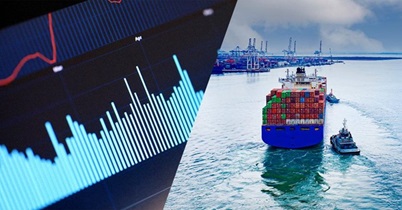Key data from Lloyd’s List Intelligence for the week ending March 17, 2024
Numbers reflect cargo-carrying vessels of 10,000dwt+. Pre-Houthi attack ‘normal’ average taken for the period November 6 - December 3, 2023.
There was a small increase in vessel transits through the Bab el Mandeb strait at 229 in the week ending March 17 (week 11 of 2024), compared with 219 in the previous seven days.
In deadweight tonnage terms the increase was even greater at 18%, or 18.5m dwt. This number will likely be revised slightly upwards next week as more data on dark transits becomes available.
The increase was driven by a rise in crude oil tankers to 64, from 46 in week 10, but this was offset by a fall in containership transits to 34, from 40, and product tankers to 28 from 35.
The daily average number of vessels active in the Red Sea fell to a new post-Houthi attack low of 207 in the most recent week. This compares with 402 in the corresponding week last year and 379 in the ‘normal’ average week.
For the Suez Canal, there was relative stability in vessel transits last week with a decline 4% to 215 vessels cancelling out the 4% week on week rise seen the week before. Some 215 vessels traversed the canal in week 11, down from 224 in week 10.
However, compared with the same week in 2023, when 478 vessels were recorded, the year-on-year drop is 55%, which is, coincidentally, the same decline in percentage terms versus the pre-Houthi attack ‘normal’ average.
The transit volumes for most vessel types is stable, with an increase in crude tanker traffic to 51 from 46 and a drop in containerships to 27 from 39 the most notable changes.
Cape of Good Hope vessel passings fell by 5% in the most recent week to 670, down from 706 the previous seven days, and 71% higher than the ‘normal’ average as well as 78% higher than the same week last year.
In deadweight tonnage terms, Cape of Good Hope passings were equivalent to 78.4m dwt in week 11, down 4% week on week.
The most significant drops in total vessels week on week by vessel type were for product tankers – down to 46, from 78, and bulk carriers to 345 from 359 but the number of vehicle carriers increased to 28 from 17.
Mediterranean transhipment hubs
Analysis by Lloyd’s List Intelligence shows the closure of the Red Sea route to the Mediterranean has resulted in larger containerships skipping the region, which in turn has sent transhipped volumes elsewhere.
Containership calls to eastern Mediterranean ports have fallen sharply since the start of the Red Sea crisis, as carriers redesign their networks to take account of the longer routing around the Cape of Good Hope.
Figures from Lloyd’s List Intelligence show vessel calls at the key transhipment hubs in Piraeus, Marsaxlokk and Gioia Tauro have all seen a decline in vessel calls since the beginning of diversions.
Comparing numbers from October, before the Houthi attacks on shipping forced the partial closure of the Red Sea, to February, by which time nearly all carriers were avoiding the Bab el Mandeb transit, shows a sharp fall in the number of main lane ships calling at the ports.
In some — but not all — cases, these have been made up for with the addition of smaller vessels, indicating cargoes are being feedered in from hubs further west or from vessels calling at Northern European ports.
Lloyd’s List Intelligence data shows Marsaxlokk and Gioia Tauro vessel calls were down by almost one-fifth during the period, while the number of vessels calling Piraeus was down 8%.
Read more on Lloyd’s List here.

Gain insight into future vessel activity with Predictive Fleet Analytics for supply chain efficiency and to pinpoint sales potential.

Keep ahead of emerging global trade trends with reliable and accurate voyage data. Predictive Fleet Analytics saves you time, money and resource by enabling you to accurately track vessels, predict vessel movements, and anticipate port congestion and delays in minutes.